There are few veggies that stand out in the garden quite like Swiss chard can. Those neon stems are so striking that it’s merely a bonus that they also happen to be fabulously tasty as well.
When disease strikes, not only can it deprive you of your dinner, but it can turn those beautiful plants into a mushy mess – and nobody wants that.
Fortunately, Swiss chard is pretty resistant to disease, especially if you know the right steps to take to help prevent problematic pathogens from visiting in the first place.
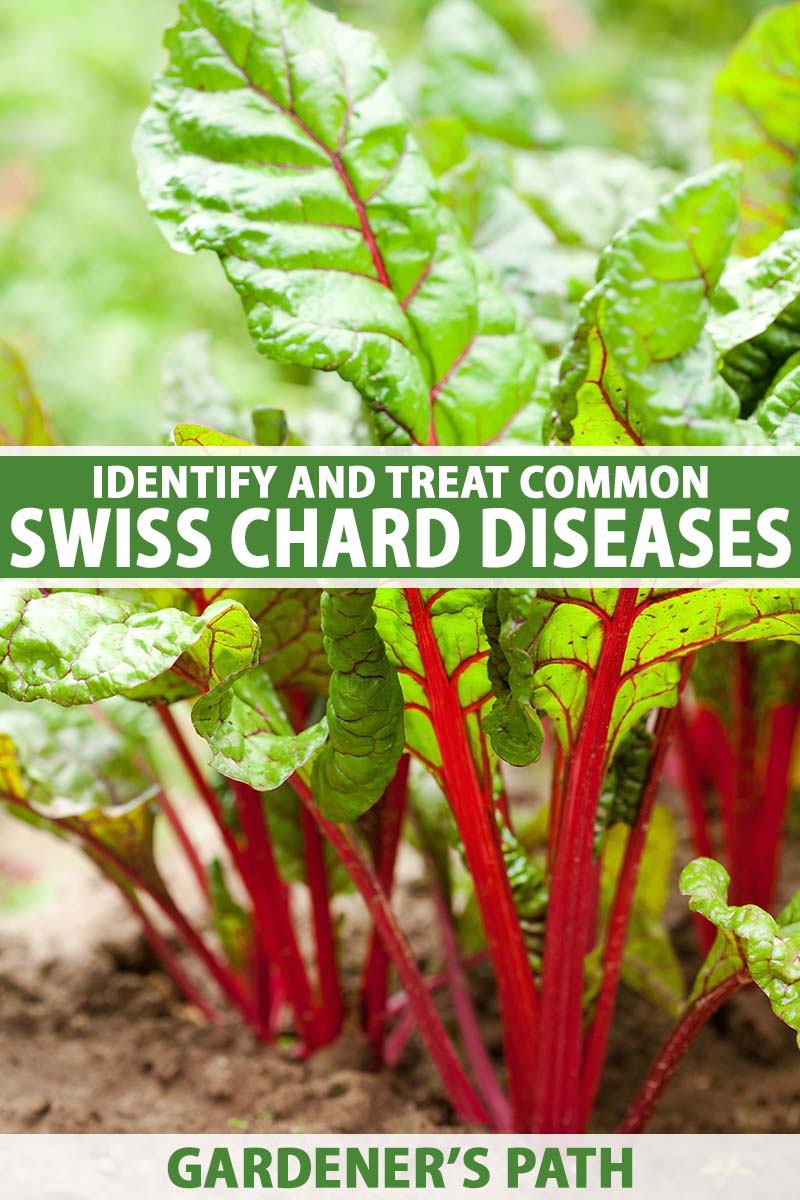
We link to vendors to help you find relevant products. If you buy from one of our links, we may earn a commission.
To that end, we’re going to look at the most common diseases, how to treat them, and what to do to prevent them. Here’s what we’ll focus on:
9 Common Diseases of Swiss Chard
If you can’t wait to cook up those lovely (disease-free) leaves, let’s hop right to it!
1. Bacterial Soft Rot
If your Swiss chard leaves have brown, water-soaked spots or if the midrib of the leaves starts looking decayed, it’s likely that the plants are suffering from bacterial soft rot.
Soft rot is caused by numerous types of bacteria, including Pectobacterium carotovorum, Dickeya dadantii, and some species in the Pseudomonas, Bacillus, Erwinia, and Clostridium genera.
These bacteria live in the soil and thrive in temperatures between 70 and 80°F, with lots of moisture.
The pathogens that cause this disease need an opening to work their way into the plant, and that means any time an insect nibbles on the stem or you accidentally cut it or rip a leaf, it’s vulnerable to soft rot thereafter.

The bacteria can hitch a ride on an insect, tools, your skin, or even the bottoms of your shoes. They also travel in water.
Beyond practicing good garden hygiene, you should also try to keep insect pests out of the garden. Be sure to water at the soil level rather than on the leaves, and avoid letting the water splash onto the foliage.
Always rotate your crops every three years, since these types of bacteria can’t feed on all varieties of veggies.
You should also take care to ensure that your plants have enough calcium, and clean up any debris in the garden in the fall.
Finally, remove any infected plant material immediately and throw it away in the trash. Don’t compost it.
2. Beet Curly Top Virus
Sure, the name makes it sound like this is something that only troubles beets, but nope! Beet curly top virus (BCTV) impacts tomatoes, beans, cucumber, mustard, and even weeds like Russian thistle.
When it infects Swiss chard, it shows up as stunted growth or curling leaves. Older leaves may become thick and stiff. Eventually, the plant turns yellow and dies. And here’s the really bad news: there is no cure.
Once your plant contracts this disease, all you can do is pull it and dispose of it.
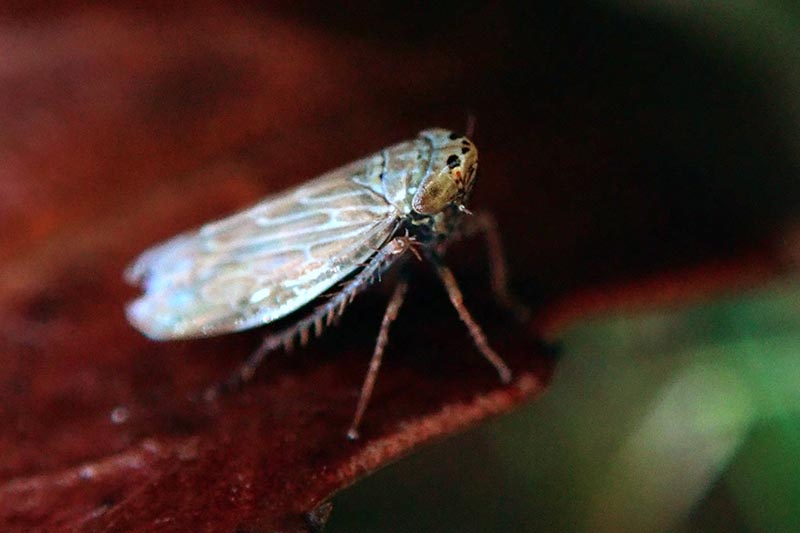
The good news is that if you are able to keep beet leafhoppers away from your plants, you won’t really have to worry much about this problem since these insects are the main vectors responsible for the spread of the virus.
Still, just one little nibble is all it takes for your Swiss chard to be toast.
The best way to keep them away is by putting up floating row covers in the early spring. A good row cover totally denies leafhoppers the ability to land on your chard in the first place.
It’s also smart to fill your garden with lots of beneficial bugs that like to make a meal of leafhoppers.
This includes parasitic wasps, lacewings, and assassin bugs.
If you don’t have as many of these helpful creatures paying a visit to your garden as you’d like, you can throw some money at the problem.
Arbico Organics carries assassin bug eggs in 250, 500, 1,000, 2,000, and 5,000-count packages.
3. Cercospora Leaf Spot
Cercospora leaf spot isn’t fun to have on any plant, but it especially sucks when your Swiss chard contracts it.
That’s because it impacts the foliage, which is the part you want to eat. If this fungus (Cercospora beticola) attacks your beets, you can still eat the roots. But a leafy plant covered in fungal spots doesn’t whet anyone’s appetite.
This fungus likes it hot, especially with some high humidity to go along with it. If the foliage remains wet all night long, even better.
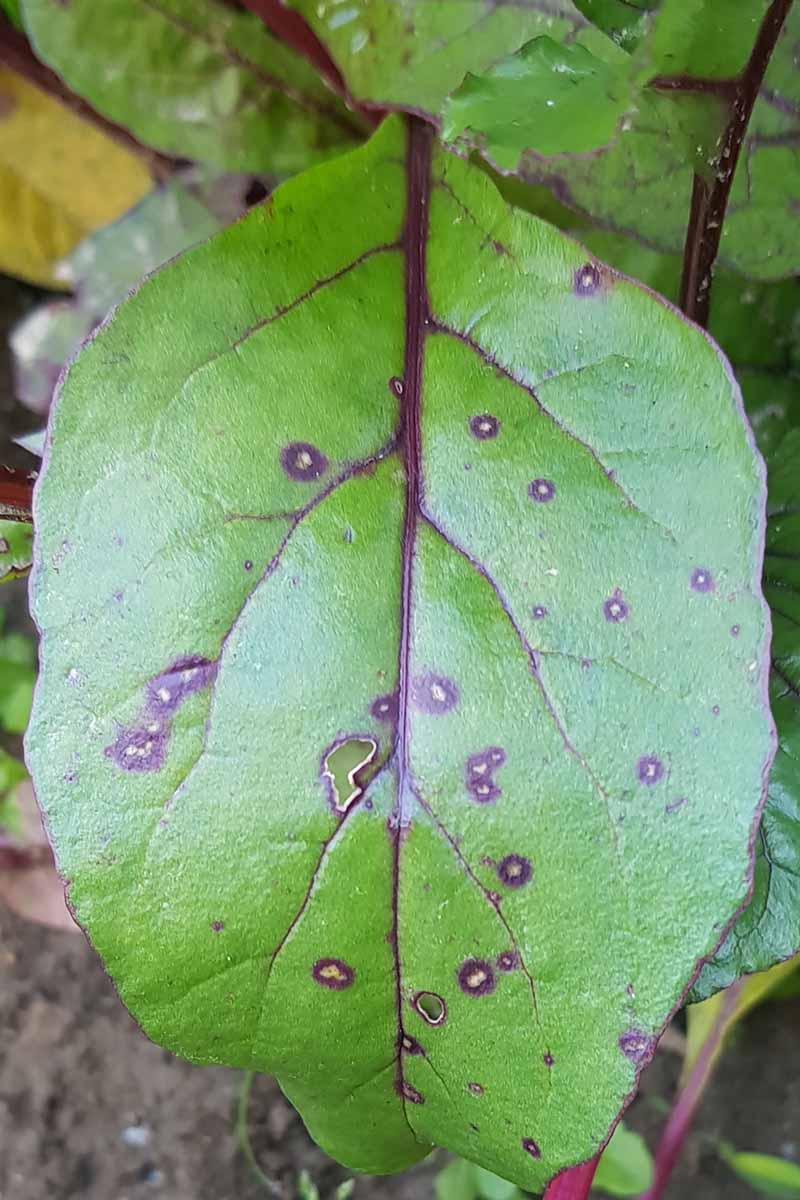
Once it takes hold, you’ll see small spots on the leaves. As they grow, they develop a light brown center and a red margin. These spots grow and eventually merge, killing the leaf.
Left unchecked, Cercospora can destroy your entire plant. It starts on the outer leaves first, so keep an eye out there.
The fungus lives in the soil, and numerous different weeds and other veggies may serve as hosts. Plus, once your plants have it, it’s difficult to control. So start with prevention.
That means rotating your crops so there’s nothing in the Amaranthaceae family growing in the same place more often than once every three years.
Also, keep all weeds out of your garden bed and always water at the soil level, not on the foliage.
Finally, if it’s too late and you already see symptoms on your plants, it’s possible to treat this infection, especially if you catch the symptoms early.
A copper sulfate fungicide can reduce or eliminate symptoms. Arbico Organics carries one made by Bonide in one- or four-pound containers.
Spray the leaves at the first sign of a problem, and keep spraying once every other week until you are ready to eat the leaves, or the symptoms are gone. Remember to always wash the leaves before consuming them.
4. Cucumber Mosaic Virus
Once again, this sounds like a disease that plagues a whole different type of plant, but cucumber mosaic virus (CMV) is actually very common around the veggie patch.
It can infect nightshades, cucurbits, and, yes – beets, Swiss chard, and other veggies in the Amaranthaceae family.
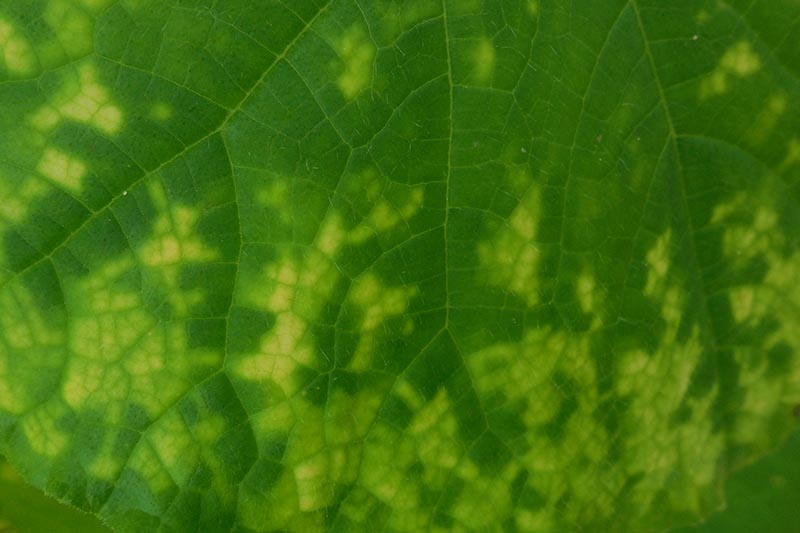
An infected Swiss chard plant may be stunted and will usually have a mottled pattern on the leaves, with patches of yellow or light green. The leaves might also exhibit patches of exaggerated cupping.
While this virus can be spread via pollen or when infected plants touch one another, aphids are the main vector that contribute to its spread.
Since aphids are so common, it can be a challenge to keep them out of your garden entirely. Our guide to Swiss chard pests has all the details you need to address an aphid situation.
5. Damping Off
Damping off is a common problem that impacts many, many different types of plants. It’s one of those issues where once one of your pants has had it, you know exactly what it looks like.
Caused by Rhizoctonia and Fusarium fungi and water molds in the Pythium genus, when damping off comes around, it causes seeds to fail to germinate. Or, if seedlings do pop up, they’ll be weak and spindly.
You might see water-soaked lesions at the base of the seedlings, and there might even be a whitish fungus that’s visible on the top of the soil.
Sadly, once your plants are infected, there isn’t much you can do. Even if they survive, they won’t ever grow into big, healthy veggies. Toss infected seedlings and start again.

To avoid damping off, always, always clean any tools and pots that you use when planting. You should also start with fresh potting soil.
Then, take extra care to be sure you aren’t overwatering, and don’t fertilize seeds or young seedlings. You should also ensure that your growing plants receive ample sunlight, for at least six hours a day.
To be extra sure you won’t have to deal with this problem, you can pre-treat the soil using Bacillus subtilis.
Arbico Organics carries CEASE, a product that contains this powerful beneficial bacteria. Nab some in gallon- and 2.5-gallon containers.
Soak the soil before planting, following the manufacturer’s directions.
6. Downy Mildew
A year without a little bit of downy mildew is a rare treat in my garden. At some point, it always seems to attack one (or more) of my plants, though Swiss chard seems to be less susceptible.
In plants in the Amaranthaceae family, it is caused by the pathogen Peronospora farinosa f. sp. betae, which thrives when temperatures are below 68°F and there is lots of moisture in the air.
If this oomycete comes to visit, you’ll first notice light green spots on the top of the leaves.
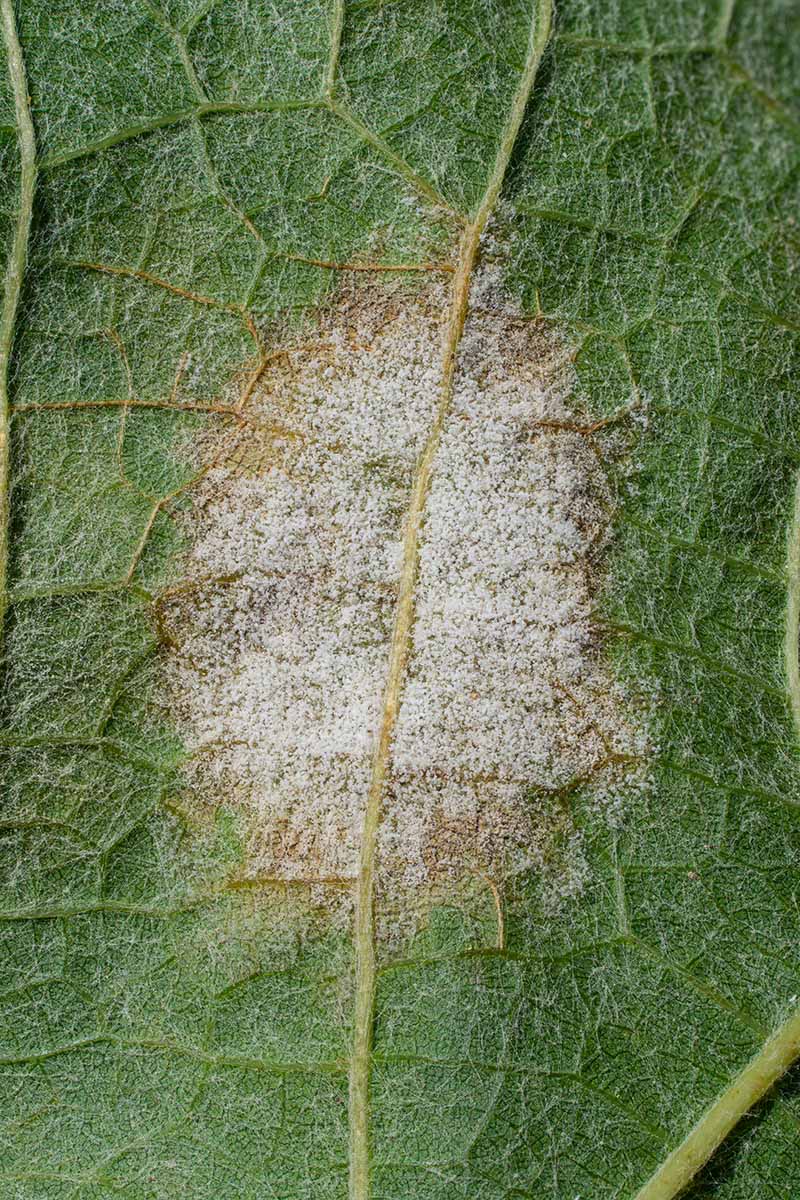
Sometimes, especially when there is a lot of moisture around, you will see white or gray fuzzy growth on both sides. Left unchecked, the leaves may wilt and die off.
Since this disease relies on moisture, controlling that element in your garden is your best bet. That means proper spacing between plants is key, because it increases air circulation.
Taking care to only water at the base of your plants and not on the foliage helps, too. You should also try to water in the morning so the leaves can dry out in the sun during the day.
A copper sulfate spray like we talked about with Cercospora leaf spot above is an effective treatment, though the sooner you start spraying, the better.
You can also spray it as a preventative if you struggle with downy mildew often, but use caution around waterways. It can leach into water, and is toxic in large amounts for fish and amphibians.
7. Leaf Spot
Phoma leaf spot causes both dark spots with a light brown halo on the leaves and rotting roots below the soil. The fungus Phoma betae, which causes the disease, can travel in water, on tools, or in the soil.
You should rotate your crops every three years, whether you note signs of this disease or not, and only purchase certified disease-free seeds as preventive measures.
A biofungicide such as Mycostop, which Arbico Organics carries in five- and 25-gram packets, can be sprayed on the foliage of your plants every three weeks when symptoms are present.
8. Powdery Mildew
Powdery mildew, like downy mildew, is another super common garden disease. It’s caused by the fungus Erysiphe polygoni and it is tenacious. I’m fully convinced that if this fungus had thumbs, it could take over the world.
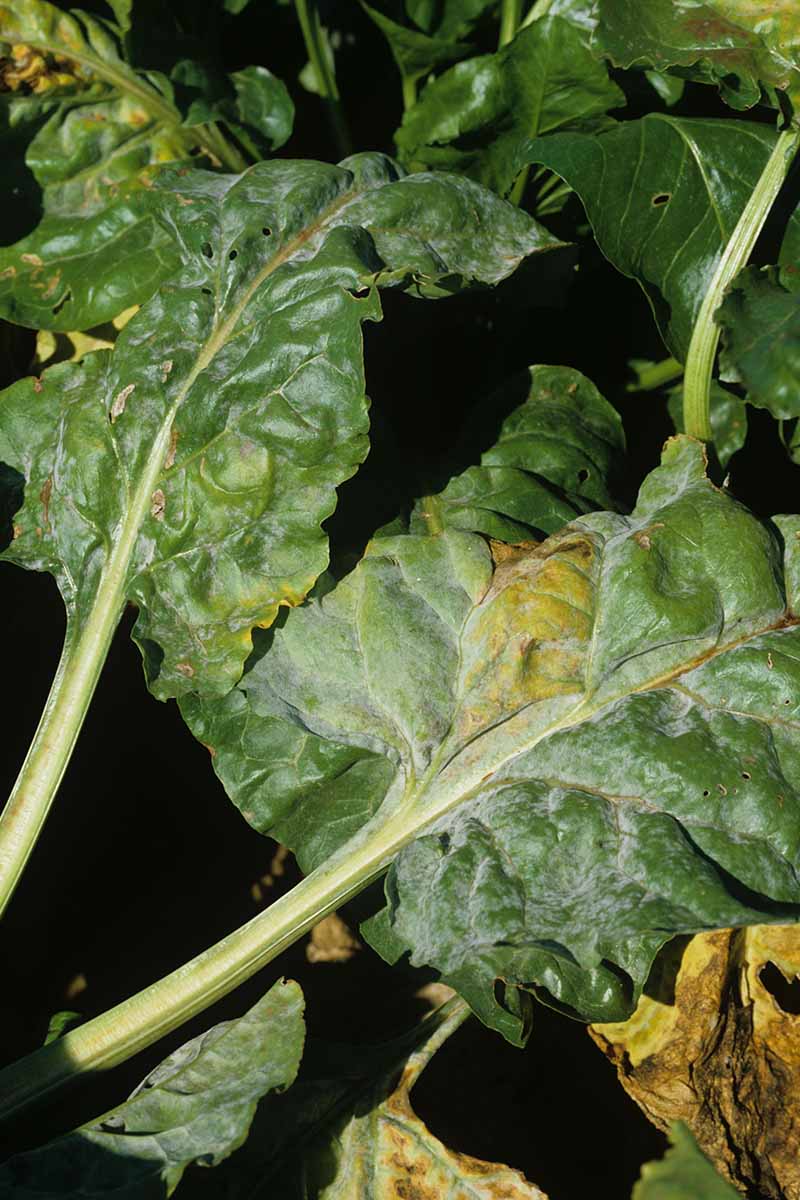
It overwinters in the soil on the tiniest bits of plant debris and it travels on the wind, your clothes, tools, and even on insects that flit from plant to plant. It can attack nightshades, beets and beet relatives, legumes, and more.
In other words, it’s hard to avoid. Once your plants have it, or even a neighbor’s, it’s hard to prevent powdery mildew.
Thank heavens it’s fairly easy to address. Keep a vigilant eye on your Swiss chard, especially when temperatures are between 60 and 80°F, but note that it can survive temperatures of 100°F and higher.
When you see small patches of white fuzz beginning to develop, it’s time to take action.
A product that contains Bacillus amyloliquefaciens strain D747 can be an effective treatment, especially if you start early.
Monterey makes a product called Complete Disease Control that uses this beneficial bacteria. Pick some up at Arbico Organics in 32-ounce ready-to-use bottles, or eight-ounce, pint-size, or gallon-size concentrates.
Monterey Complete Disease Control
Drench the leaves really well once a week for as long as the fungal growth is present. And when I say drench, I mean it.
Don’t be shy. The leaves should be dripping when you’re done. Don’t forget to spray the stems, too.
This year, I tried using a compost tea spray as a preventative. I don’t know for sure if I just got lucky or if it made all the difference, but I didn’t have any powdery mildew in my garden this year.
Although we don’t know for sure why it works, it may be that the beneficial bacteria in the tea outcompetes the powdery mildew fungi (and other detrimental microbes) for real estate space on the plant. Bottom line is that it does seem to offer some protection.
Learn more about how to treat powdery mildew in our guide.
9. Rhizoctonia Rot
The Rhizoctonia genus is a group of fungi that live in the soil. Some species attack seeds and seedlings, which is known as damping off (see above). When these fungi infect older plants, it’s known as Rhizoctonia rot.
These pathogens just love it when there is too much water in the soil, so be sure to overwater if you want to have a chance at dealing with this disease.
The impact of Rhizoctonia rot depends on how advanced it is, which is dependent upon how much moisture is in the soil.
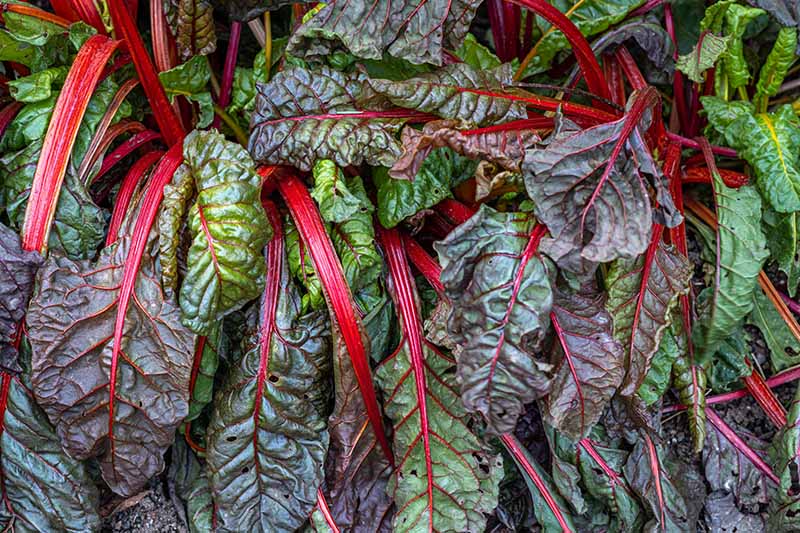
In really wet conditions, the foliage will be impacted, and you’ll have limp, yellowing leaves with water-soaked lesions. In less severe cases, the roots will start to rot away, causing the foliage to appear wilted, even when there is water present in the soil.
If you look closely at the base of an infected plant, you’ll often see white or gray fungus.
All of the preventative steps that you can take for damping off also apply here. But you also have the option to treat this infection, which is not the case with damping off.
Catching it early is key – if the infection reaches the point where the roots have rotted away, you’re out of luck.
A fungicide containing Bacillus subtilis, such as CEASE, is extremely effective against this disease. You can apply it once a week preventatively, or twice a week when signs of infection are present.
Diseases Don’t Stand a Chance
All members of the Amaranthaceae family suffer from similar diseases, but Swiss chard seems just a bit closer to problem-free than many of its cousins.
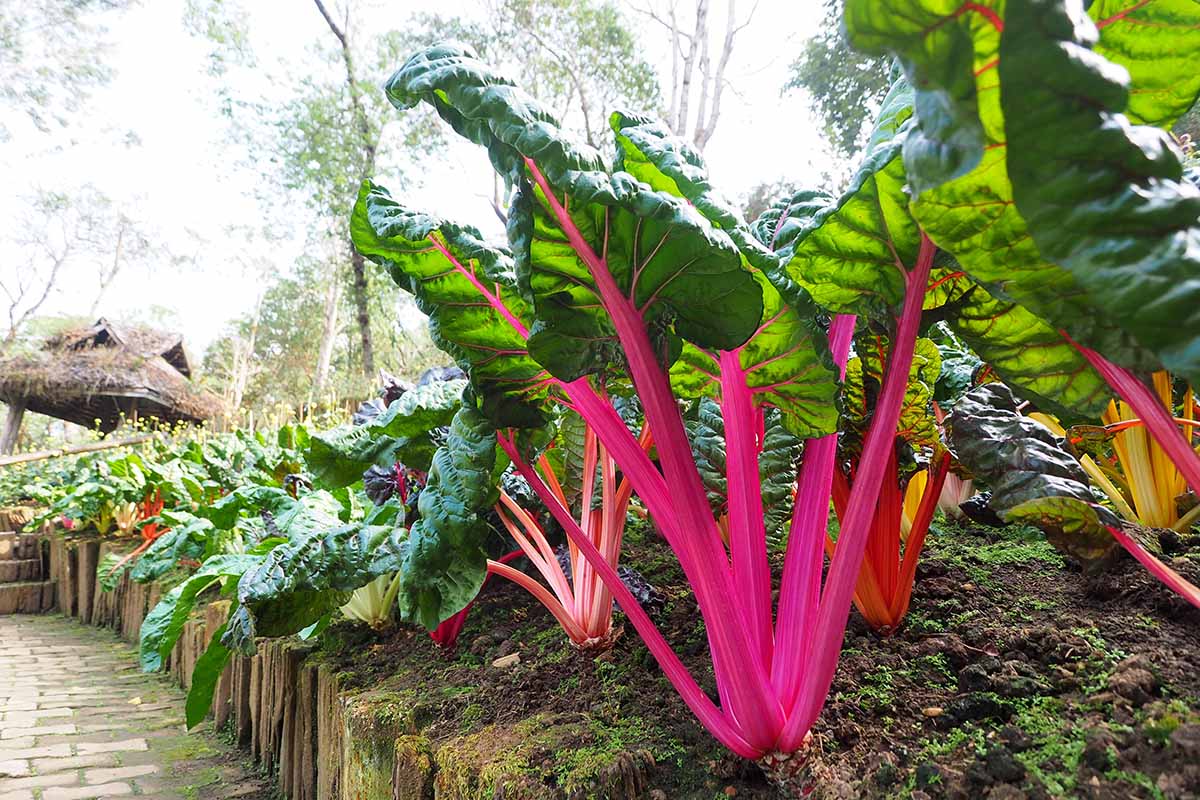
Still, you need to be aware of what to watch out for if you want to enjoy your harvest before fungi, viruses, and bacteria can. Hopefully, this guide will help you achieve that, and diseases won’t stand a chance.
Have you tackled an unwelcome pathogen? Come back and let us know what you dealt with and what helped in the comments below. That way, you can help your fellow gardeners out. And if you have any questions, feel free to ask away!
If you can’t get enough Swiss chard goodness – and let’s be honest, who can? – read these informative guides next:
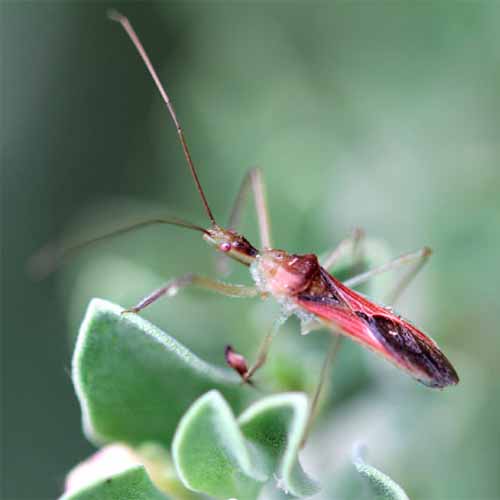
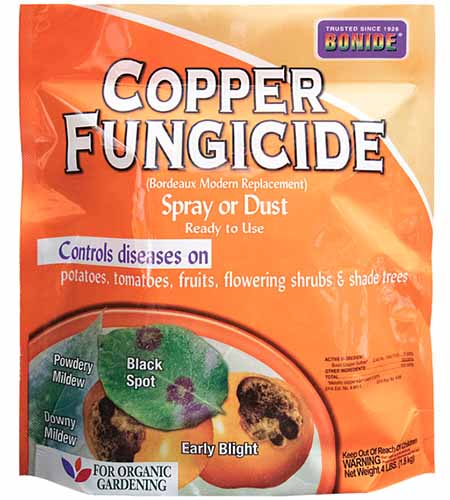
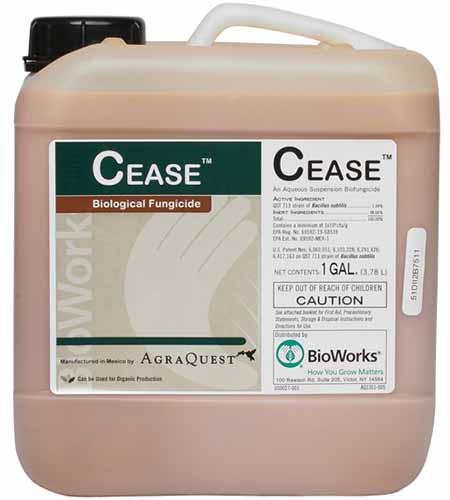


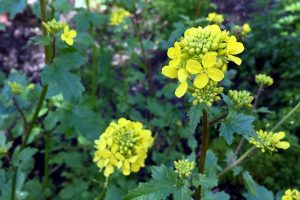


Only an idiot throw vegetable matter in the trash. Shame on you for even saying that.
Thanks for the feedback Guy, but vegetable matter infected with pathogens is not a good candidate for the compost pile.
I am not a serious gardener but I love chard. We grow it very year. This year for the first time we got discoloured leaves. I’ve found the best way to deal with it is simply pull off the affected leaves or maybe just the patch. The chard will grow back with healthy leaves aplenty. Well it worked for me!
Thanks for the tip, John!